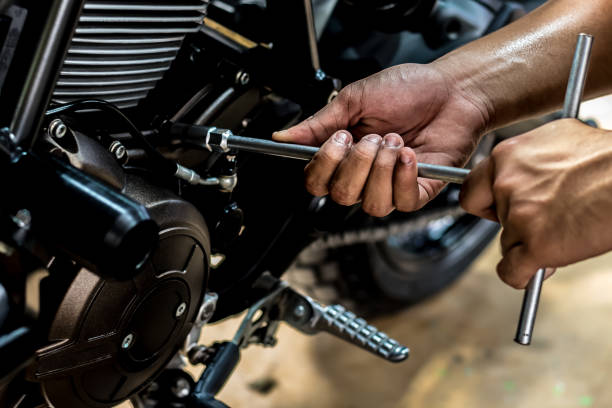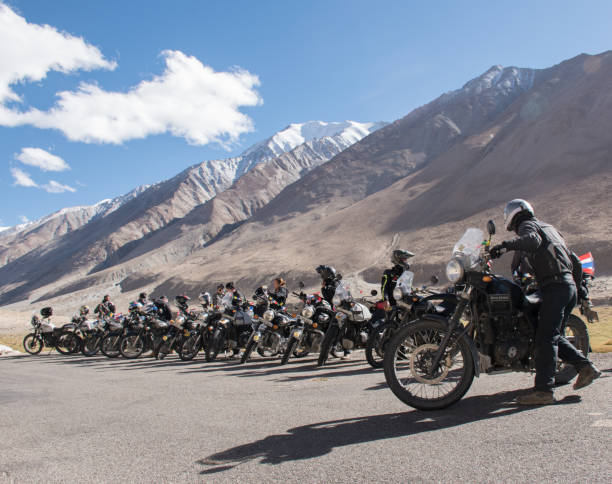Navigating the world of motorcycling can be thrilling yet daunting, especially for beginners. One key term you’ll encounter is “LAMS approved.” But what does “LAMS approved” mean? This article delves deep into the LAMS system, helping you understand and choose a LAMS-approved bike that suits your needs.
Understanding LAMS: A Safety Initiative for New Riders
LAMS, or the Learner Approved Motorcycle Scheme, is a program designed to keep new riders safe as they hone their riding skills. Implemented in several countries, including Australia and New Zealand, the LAMS system restricts new motorcyclists to riding lower-powered motorcycles. This regulation ensures that beginners aren’t overwhelmed by handling high-performance bikes before they’re ready.
How Does a Motorcycle Qualify as LAMS Approved?
In various regions, motorcycles must meet specific criteria regarding engine capacity and power-to-weight ratio to be classified as Learner Approved Motorcycles (LAMS). Here’s a breakdown of the general requirements:
Engine Capacity
LAMS-approved motorcycles typically have an engine capacity up to 660cc (cubic centimeters). This limitation helps ensure that learners and novice riders can handle the bike comfortably without excessive power.
Power-to-Weight Ratio
The power-to-weight ratio is a critical factor in LAMS approval. It is usually specified as not exceeding 0.2 kW/kg (kilowatts per kilogram). This ratio ensures that the motorcycle’s power output is balanced with its weight, promoting safer handling and control for learners.
Criteria Variation by Region
Regulations for LAMS approval can vary significantly across different regions, adhering to local transportation authority guidelines and safety standards.
- Australia: Governed by state-specific departments such as the Department of Transport and Main Roads (Queensland).
- New Zealand: Regulated by the New Zealand Transport Agency (NZTA) with specific guidelines.
- Europe: Compliance with European Union (EU) standards or national regulations.
Selecting a LAMS Approved Bike: Factors to Consider

Choosing a LAMS-approved bike isn’t just about legality; it’s also about comfort, suitability, and personal preference. Here’s a structured approach to making your decision:
Determine Your Needs
When choosing a LAMS-approved bike, it’s essential to consider not only legal requirements but also your personal preferences and practical needs.
- Purpose: Assess what you will primarily use the bike for—commuting, touring, or off-road adventures.
- Budget: Set a realistic budget that includes the cost of the bike, riding gear, insurance, and maintenance expenses.
Research Models
Researching different LAMS-approved models is crucial to finding a bike that suits your needs and preferences.
- Brand and Model: Explore popular LAMS-approved models like Yamaha MT-03, Kawasaki Ninja 400, and Honda CB500F to see which features and specifications align with your requirements.
- New vs. Used: Decide whether you prefer the benefits of a new bike, such as warranties and the latest technology, or the cost savings of a quality used bike.
Test Ride
Before making a final decision, it’s important to test ride the bike to ensure it meets your expectations in terms of comfort and performance.
- Comfort and Fit: Check how well the bike fits your body type and whether it feels comfortable during long rides.
- Handling: Assess how the bike handles in various road conditions, including city streets and highways, to ensure it meets your riding style and needs.
Real Costs Associated with LAMS Approved Bikes
To give you a clearer picture, here’s a table outlining the cost range for some popular LAMS-approved motorcycles, both new and used:
| Brand and Model | New ($AUD) | Used ($AUD) |
| Yamaha MT-03 | 7,299 | 4,500 – 6,000 |
| Kawasaki Ninja 400 | 7,999 | 5,000 – 6,500 |
| Honda CB500F | 7,799 | 4,800 – 6,300 |
Remember, prices can vary based on location, dealer, and the bike’s condition.
Maintenance Tips for Your LAMS Approved Bike

Maintaining your LAMS approved bike is crucial for both safety and longevity. Here are some key maintenance tips:
Regular Checks
Regular inspections help catch potential issues early and ensure your bike operates smoothly.
- Brakes: Check brake pads and discs for wear. Ensure brake fluid levels are adequate and brake responsiveness is optimal.
- Tires: Inspect tire tread depth and condition. Check tire pressure regularly to maintain proper traction and handling.
- Lights: Verify that all lights—headlights, brake lights, turn signals—are functioning correctly to ensure visibility on the road.
- Oil Levels: Monitor engine oil levels and quality. Follow manufacturer recommendations for oil change intervals to maintain engine performance.
Scheduled Service
Adhering to the manufacturer’s service schedule is crucial for keeping your LAMS approved bike in peak operating condition.
- Regular servicing helps detect and address mechanical issues before they escalate.
- Services typically include oil and filter changes, brake inspections, chain adjustments, and overall system checks.
Storage
Proper storage practices protect your bike during periods of non-use, preventing rust and deterioration.
- Store your bike in a secure, dry location, preferably indoors or under a protective cover to shield it from the elements.
- Consider using a motorcycle stand to prevent flat spots on tires and maintain proper weight distribution.
Conclusion
Understanding what “LAMS approved” means is the first step toward a safe and enjoyable riding experience. By choosing the right LAMS approved bike, you set yourself up for a rewarding journey in the world of motorcycling. Whether you opt for a sporty Kawasaki or a versatile Honda, ensure it meets your needs, budget, and the LAMS criteria.
FAQ
LAMS approved bikes are ideal for new riders due to their manageable power and size, making them easier to handle and safer for gaining riding experience.
Modifications are limited as they can affect the bike’s power-to-weight ratio, potentially making it non-compliant with LAMS regulations.
Modifications are limited as they can affect the bike’s power-to-weight ratio, potentially making it non-compliant with LAMS regulations.
This varies by region, but typically, you must ride a LAMS approved bike until you obtain a full motorcycle license, which could take a few years depending on your progress and local laws.
Yes, LAMS approved bikes are highly sought after, especially by new riders. They generally retain good resale value.
